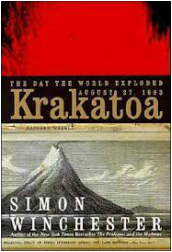
In February 535 AD the world literally shook. A notation in a Chinese journal recorded "a huge thunderous sound coming from the south west." Byzantine historian Porcopius noted that during the year 536 "the sun gave forth its light without brightness like the moon during this whole year." The following decades were characterized by drought, plague, famine, and death that spread over the earth. In 1978 a team of Danish, Swiss, and US scientists drilled 1.25 miles deep into the Greenland ice cap to look for clues to the cause of the disastrous events occurring during the latter part of the 6th century AD that had begun in the year 535. Imprints in the ice cores they retrieved showed evidence of two substantial volcanic eruptions that took place around the latter part of the 6th century. Similar ice cores drilled in Antarctica provided evidence of acid snowfall for approximately four consecutive years. Some scientists suggested that the days of darkness and distress were caused by a tremendous eruption of the Indonesian volcano called Krakatoa that created a massive caldera 25 miles in diameter that now lies mostly underwater in the Sunda Strait between Java and Sumatra. Could such rapid climate change occur in our modern age? Unfortunately, yes. Six to ten known volcanoes called supervolcanoes are large enough to create a global disaster should they explode and eject molten lava and poisonous gases high into earth's atmosphere thereby affecting the climate world wide. Some historians point to this period as the beginning of the Dark Ages. Whether it was a volcanic explosion or perhaps the impact on earth of a comet or asteroid that created the days of darkness and death in the 6th century, it will happen again and quite possibly result in another Dark Ages for the human race.
 RSS Feed
RSS Feed